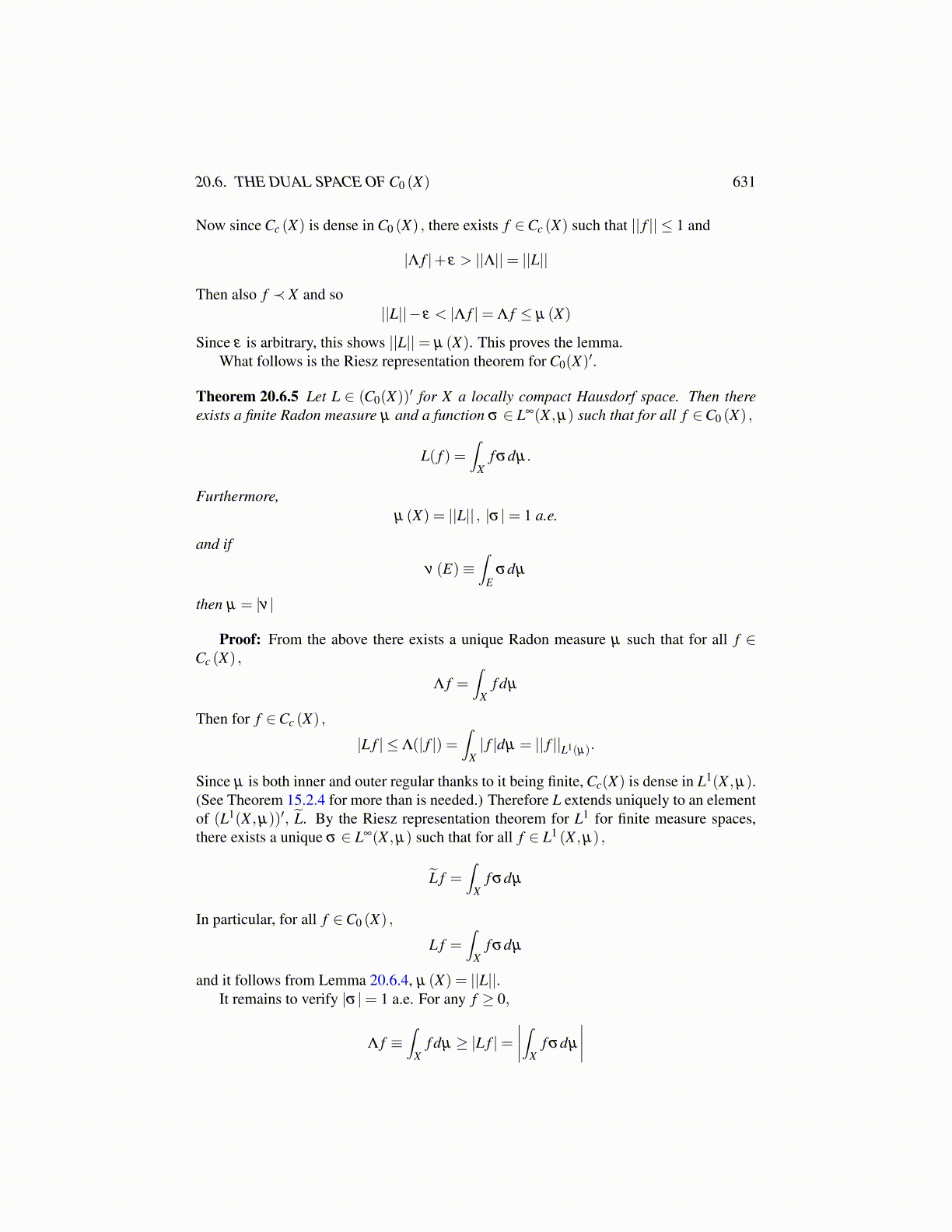
20.6. THE DUAL SPACE OF C0 (X) 631
Now since Cc (X) is dense in C0 (X) , there exists f ∈Cc (X) such that || f || ≤ 1 and
|Λ f |+ ε > ||Λ||= ||L||
Then also f ≺ X and so||L||− ε < |Λ f |= Λ f ≤ µ (X)
Since ε is arbitrary, this shows ||L||= µ (X). This proves the lemma.What follows is the Riesz representation theorem for C0(X)′.
Theorem 20.6.5 Let L ∈ (C0(X))′ for X a locally compact Hausdorf space. Then thereexists a finite Radon measure µ and a function σ ∈ L∞(X ,µ) such that for all f ∈C0 (X) ,
L( f ) =∫
Xf σdµ.
Furthermore,µ (X) = ||L|| , |σ |= 1 a.e.
and if
ν (E)≡∫
Eσdµ
then µ = |ν |
Proof: From the above there exists a unique Radon measure µ such that for all f ∈Cc (X) ,
Λ f =∫
Xf dµ
Then for f ∈Cc (X) ,
|L f | ≤ Λ(| f |) =∫
X| f |dµ = || f ||L1(µ).
Since µ is both inner and outer regular thanks to it being finite, Cc(X) is dense in L1(X ,µ).(See Theorem 15.2.4 for more than is needed.) Therefore L extends uniquely to an elementof (L1(X ,µ))′, L̃. By the Riesz representation theorem for L1 for finite measure spaces,there exists a unique σ ∈ L∞(X ,µ) such that for all f ∈ L1 (X ,µ) ,
L̃ f =∫
Xf σdµ
In particular, for all f ∈C0 (X) ,
L f =∫
Xf σdµ
and it follows from Lemma 20.6.4, µ (X) = ||L||.It remains to verify |σ |= 1 a.e. For any f ≥ 0,
Λ f ≡∫
Xf dµ ≥ |L f |=
∣∣∣∣∫Xf σdµ
∣∣∣∣